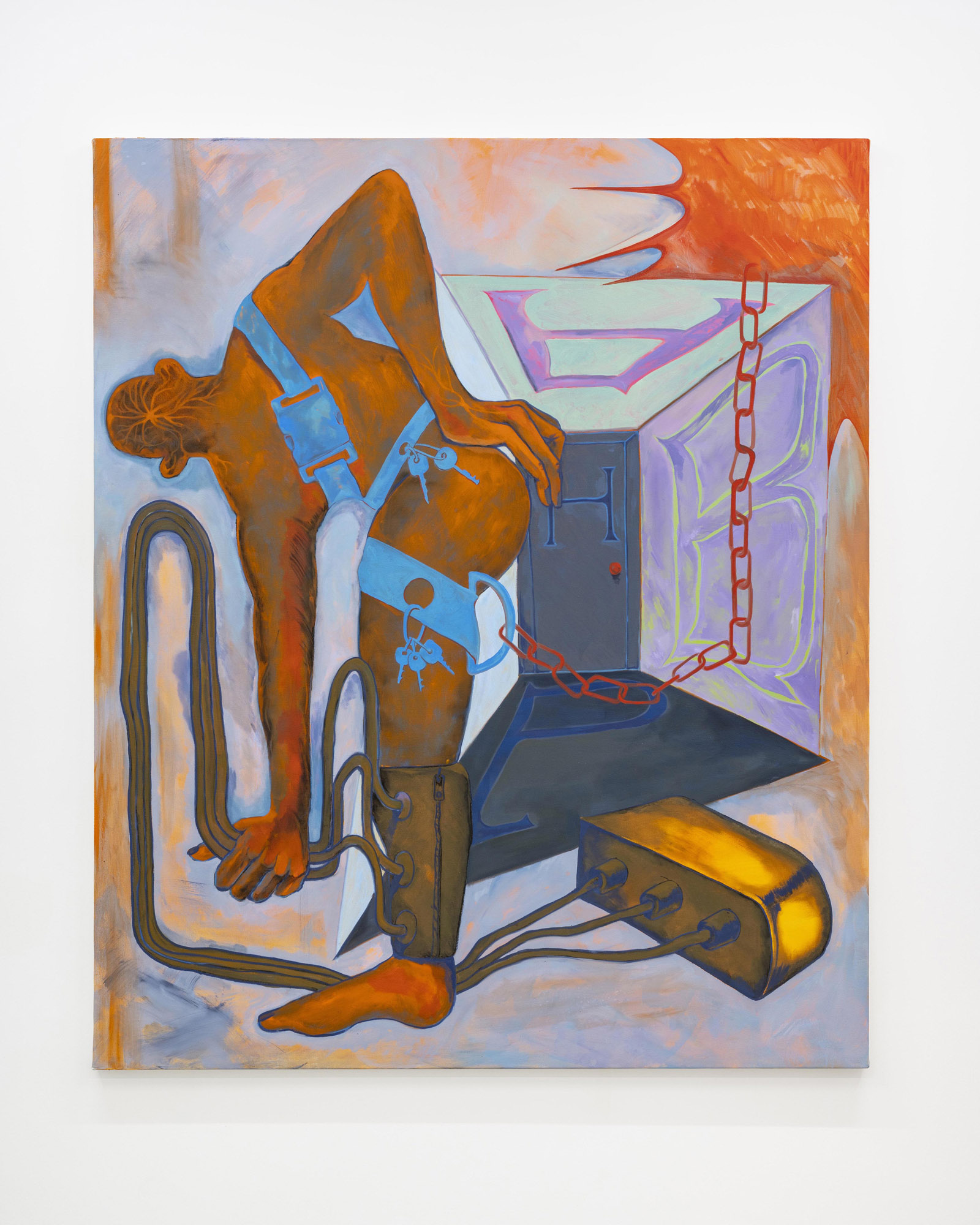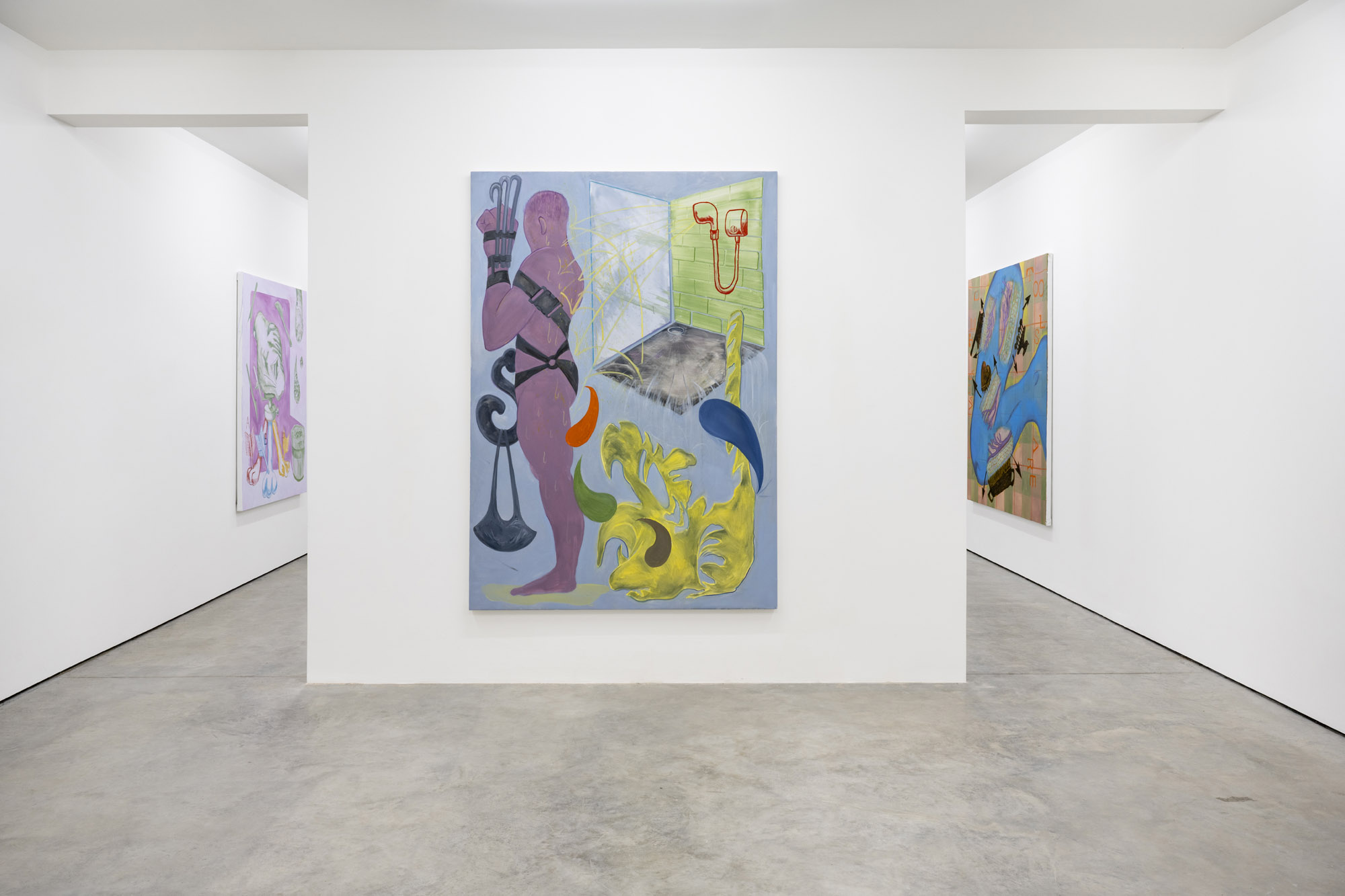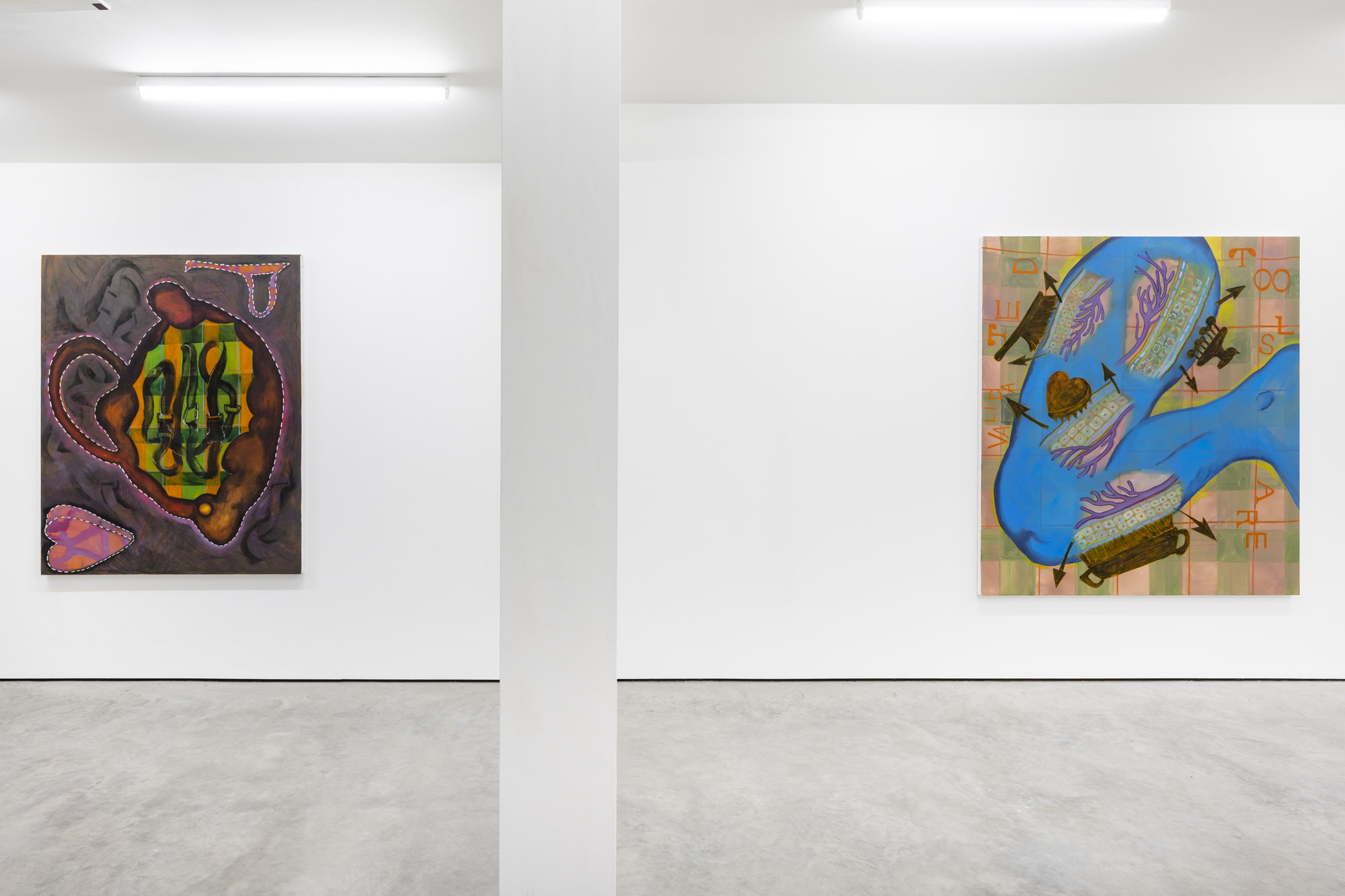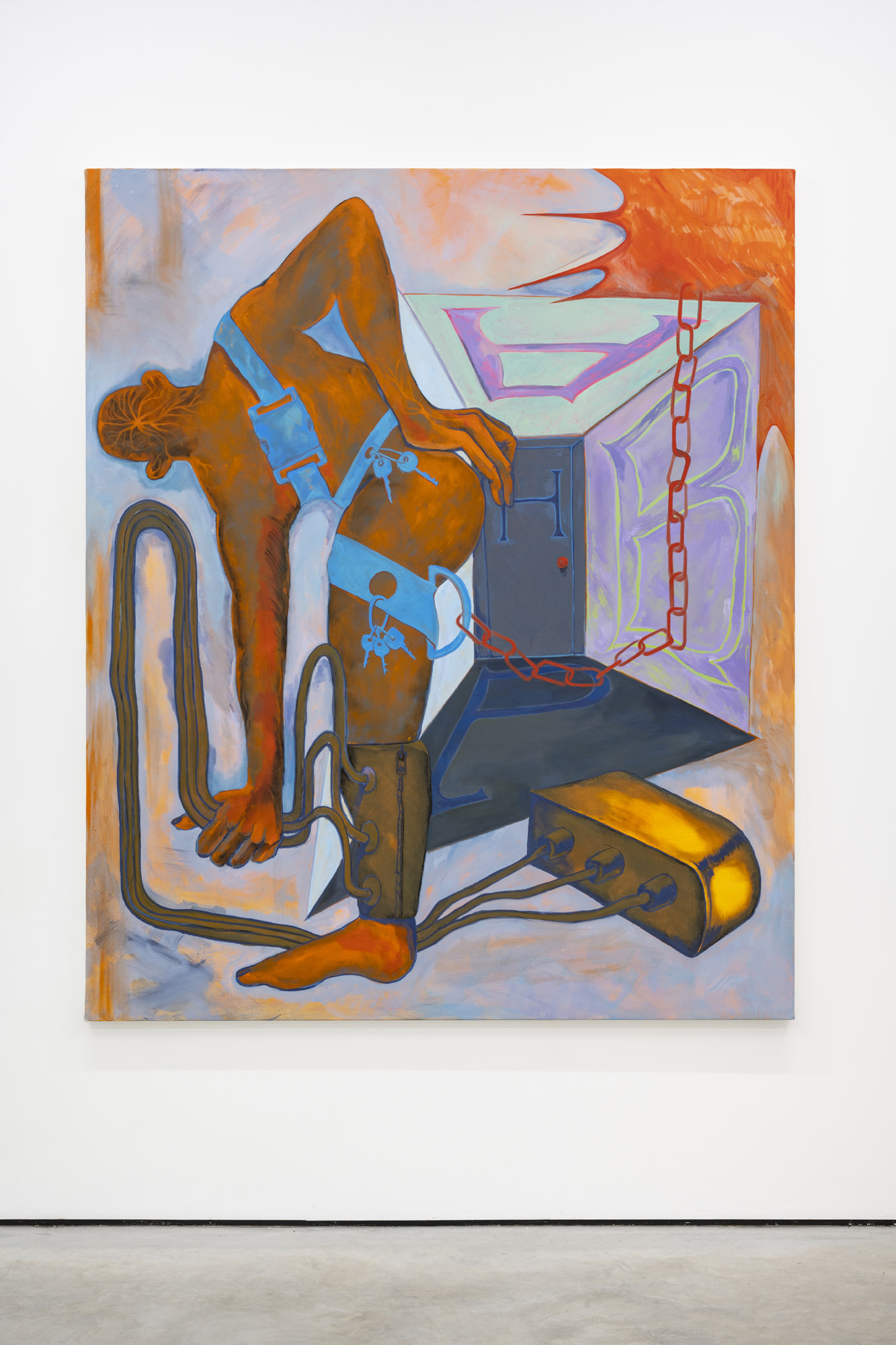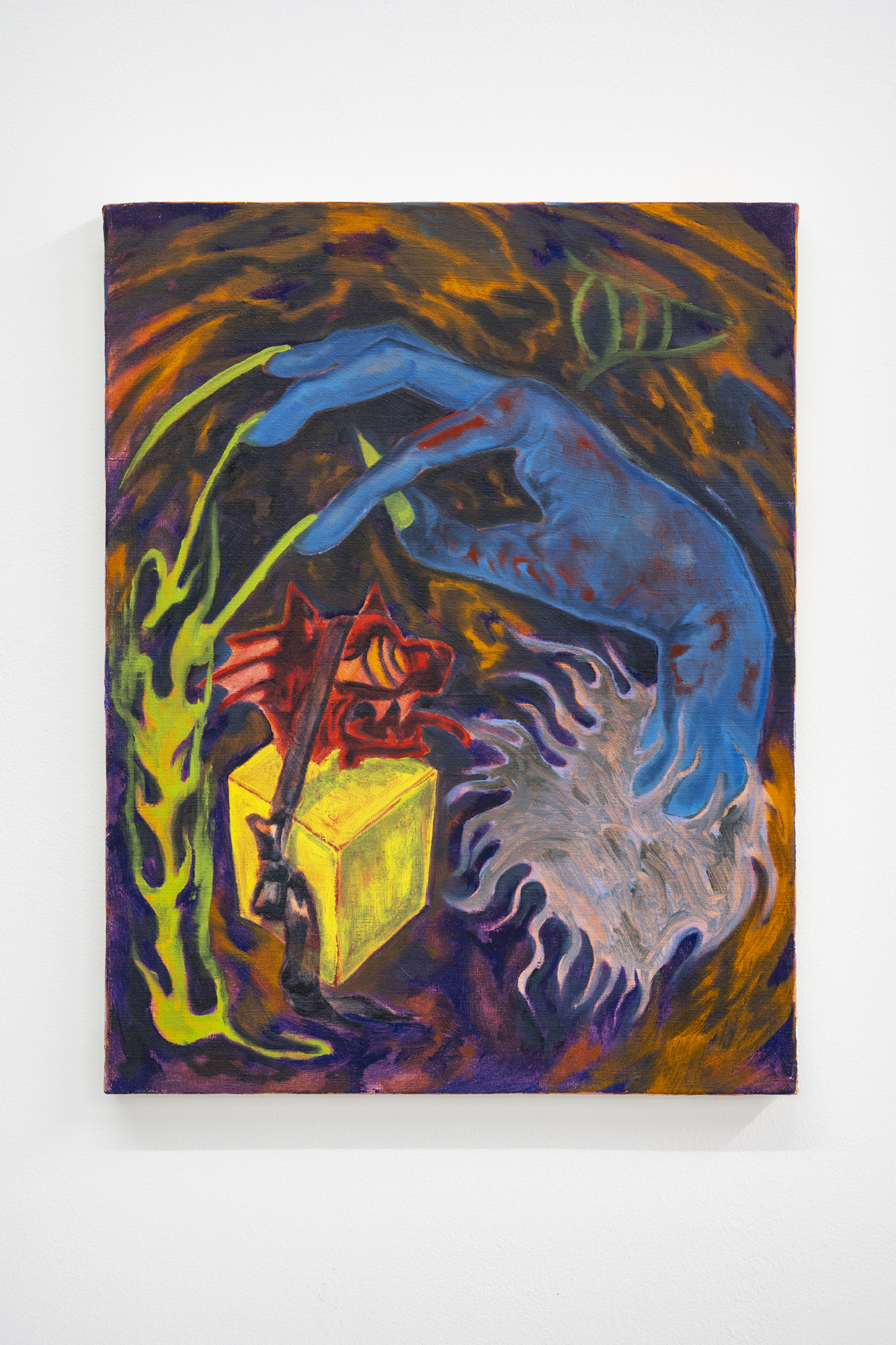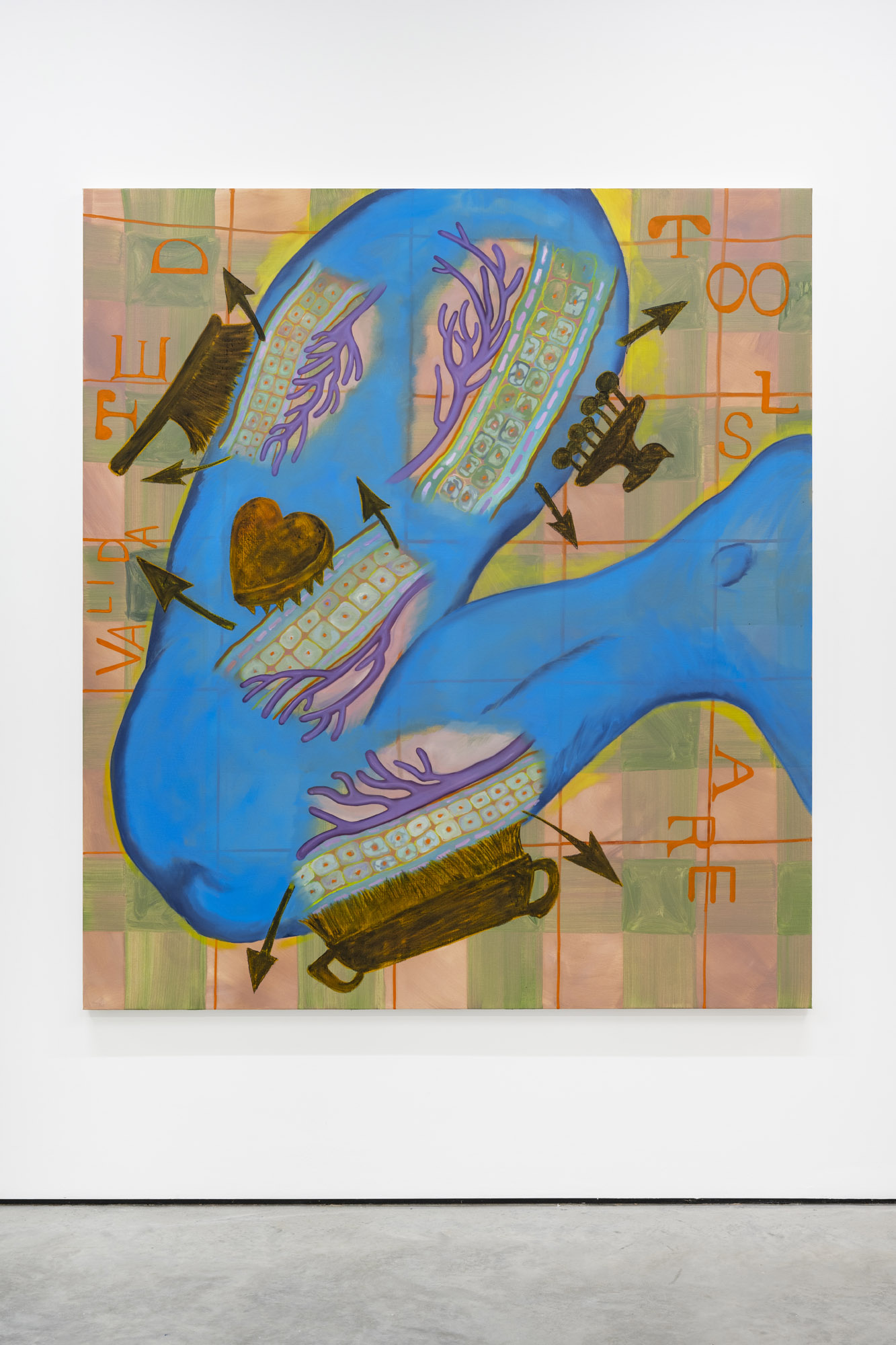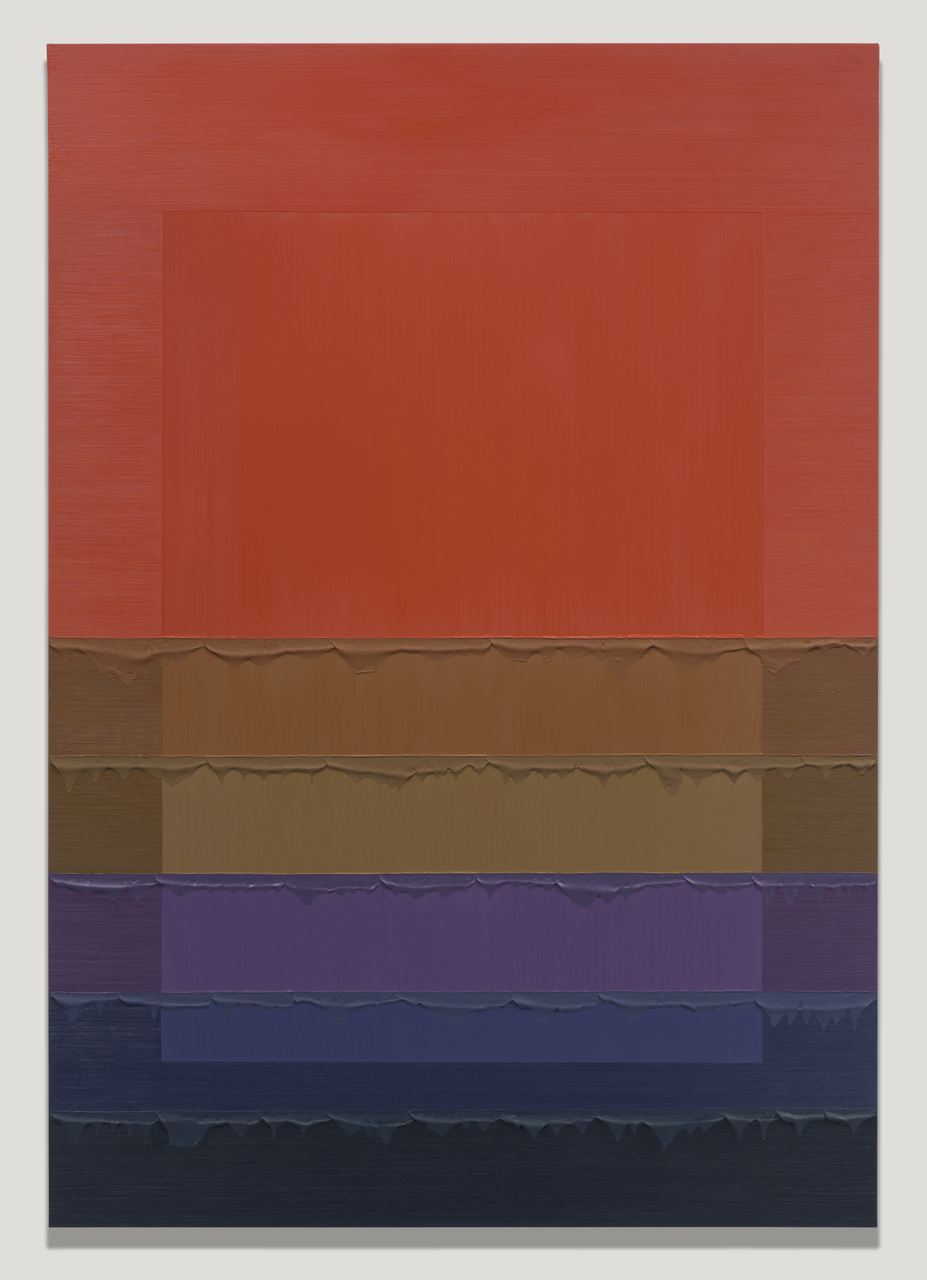Artist: KAITO Itsuki
Exhibition title: The Monopolistic Sweet Spots
Venue: MAMOTH, London, UK
Date: December 7, 2022 – January 14, 2023
Photography: all images copyright and courtesy of the artist and MAMOTH, London
MAMOTH is pleased to announce KAITO Itsuki’s first European and London solo exhibition, opening at the gallery December 7, 2022.
KAITO Itsuki pairs bold coloration with elastic narratives in which humans, animals, and imagined creatures metamorphosize and come to terms with identification. Itsuki came of age in Sapporo, Hokkaido during the turn of the 21st century, when the expanded possibilities of the world wide web allowed for the overwhelming influx of visual materials. Her referential database is informed by nonhierarchical images insofar as she wasn’t in proximity to much fine art growing up. The emergent mythologies that Itsuki formulates are reflexive prompts for the viewer to contend with social and psychological structures. Individual peculiarities are weighed against cultural mores in an effort to expand the self beyond the bounds of an implicit order. Itsuki achieves this outcome by utilizing both cute and austere imagery, tracking the semiotics of her forms and pursuing the potential within unlikely combinations.
KAITO Itsuki collects her references everywhere, from the street to museums, her current tenure in London providing a fresh database to pull from. She embarks from a place of curiosity, paying mind to the unique patterns of medical illustrations and the ways they connect to the sensing body. These paintings contain specific stories as Itsuki seeks to create work that deals with the system of identification. However, she maintains that it is not necessary for these narratives to be clear to the viewer, and that she encourages disparate understandings of her visual forms. Itsuki’s content is auto-generated as she moves between her paintings, carrying aspects from previous works to new ones. Her intuitive colour selection places the onus on contrasting tones rather than gradation. Grotesque shades of brown collide with candy pinks and blues to a satisfying effect. Itsuki ensures that the compositions are tonally resolved despite their unlikely colour arrangements.
Itsuki’s consistent implication of a figure reflects her ongoing curiosity about embodiment. These entangled forms are likewise inspired in part by her formative exposure to Jan Švankmajer’s films, particularly Conspirators of Pleasure. This bizarre comedy features a mélange of characters engaged in erotic displays. The strange narrative pacing in Švankmajer’s film is echoed in Itsuki’s systematics. She mirrors the fetishistic content in less explicit terms. Švankmajer’s offbeat feature reaches a particular climax as one of the characters drags brushes erotically around his body. A close-up shot sees a confluence of bristles caressing the man’s feet, which Itsuki draws reference to in The monopolistic sweet spots (Mapping of senses). The painting is an abstraction of this scene, as here the artist has illustrated a pair of feet with bandages and multicoloured spots dotted about their pale soles – an approximation of reflexology diagrams.
One can also see allusions to R.B. Kitaj’s collaged images where limbs bend awkwardly and objects deny gravitational limits. Notre Dame de Paris and Walter Lippmann are both tumultuous jumbles of figures and artifacts that appear to communicate something just beyond the viewer’s grasp. Robert Hughes accounts for this, writing about Kitaj’s ‘disconnected emblems of a moment’, contributing to ‘the sense of not having the whole story that comes from living at no remove from traumatic events’. The painter’s surreal idiosyncrasies remain consistent and compelling, an aspect that Itsuki absorbs into her methodology. Her compositions are assembled so that they become mobile systems imbued with inexhaustible energies. They are grounded in her unique approach to content and form.
These kink-infused images demarcate power structures and sexual proclivities without concern for divisions between good and bad. Itsuki’s neutral experimentation extends from her sensorial and mythological curiosities, as she seeks links between her images and thematic constants. Her unification of fragments is accomplished through veins and arrows that act as connective tools. Metaphors appear as stand-ins for direct explications, as Itsuki persistently addresses human behaviours and senses that are private and thus unknowable to others. By diagramming thoughts, figures and objects, she sets out to configure alternative modes of communication.
Text by Reillv Davidson
Reillv Davidson is a curator and writer based in NY.

